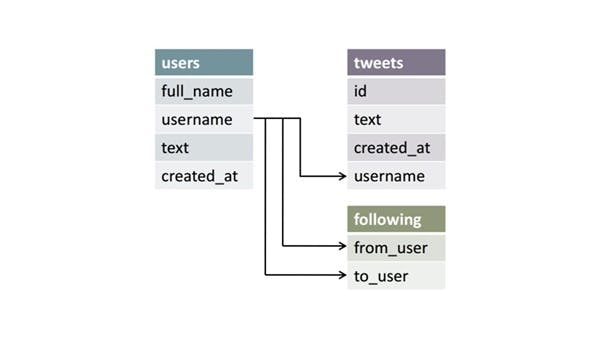Skip to content

What is a database?
A database is an electronic system that allows data to be easily accessed, manipulated and updated. In other words, a database is used by an organization as a method of storing, managing and retrieving information. Modern databases are managed using a database management system (DBMS).
What are the different types of databases?
explains this pretty well. Here is an excerpt (Number 8) which relates to the type of database you need:
8.Relational Databases
These databases are categorized by a set of tables where data gets fit into a pre-defined category. The table consists of rows and columns where the column has an entry for data for a specific category and rows contains instance for that data defined according to the category. The Structured Query Language (SQL) is the standard user and application program interface for a relational database.
There are various simple operations that can be applied over the table which makes these databases easier to extend, join two databases with a common relation and modify all existing applications.


How does the server relate to the database?
This diagram explains it pretty well:


The server is a special computer which you can log into remotely. It is setup in a way that multiple people can use it at once and that it can manage data-heavy tasks. The server is hardware (even cloud servers exist in the real world at a server farm) while the database is software.
CollectionsMax is also software.
CollectionsMax - Front-end (GUI) graphical user interface Software which is user friendly. This is how you and your staff access accounts. CollectionsMax requires a
Database to operate. The database exists only on the
Server - The virtual PC which is configured to allow multiple connections.
CollectionsMax used to be built on MySQL. When MySQL was purchased by Oracle several years back, some of the developers were worried that Oracle would start charging for this free program so they created an identical spin-off called MariaDB.
The version of MariaDB that CollectionsMax is built on is MariaDB 5.5.7
CollectionsMax is useless without a database, and a database is useless without a front-end User Interface unless you know SQL and plan on answering calls while simultaneously writing code such as:
SELECT
d.accountnumber AS 'Account Number',
d.filenumber AS 'File Number',
d.fullname AS 'Debtor Name',
d.socialsecuritynumber AS 'SSN',
p.paymentdateformat AS 'Payment Date',
p.paymentamountformat AS 'Amount',
CONCAT((100 - d.contingencyamount), '%') AS 'Fee',
d.originalcreditor AS 'Original Creditor'
FROM
collectionsmax.dbase d
JOIN
collectionsmax.payments p
ON d.id = p.maindatabaseid
WHERE
d.filenumber = 123456
OR d.primaryphone = '555-555-5555'
ORDER BY d.lastname ASC , p.lastpaymentdate ASC;
That is an example of what you would need to type in to your command prompt within your SQL Server Database Command Line to look up someone calling from 555-555-5555 and stating that their File Number is 123456.
CollectionsMax prevents you from having to learn SQL and instead makes it user-friendly by writing this code for you on the back end and only showing you the results in an easy to understand way.
That is why you can click [Change Status] → [Promise to Pay] instead of typing out:
SET @DebtorID =
(
SELECT
d.id
FROM
collectionsmax.dbase d
WHERE
d.filenumber = 123456
LIMIT 1
);
UPDATE collectionsmax.dbase d SET d.statusname = "Promise to Pay" WHERE d.id = @DebtorID;
That is the purpose of
Want to print your doc?
This is not the way.
This is not the way.

Try clicking the ··· in the right corner or using a keyboard shortcut (
CtrlP
) instead.